When Yves Saint Laurent presented his legendary “Safari” collection in 1968, parading leopard coats down Parisian runways, he was reactivating an ancestral aesthetic code: that of the feline as a symbol of power and seduction. More than half a century later, this fascination with feline patterns is experiencing a spectacular resurgence in the world of interior decoration.
The triumphant return of animal prints
Requests for leopard fabrics are currently multiplying at the workshops and I’m so glad it’s happening! This return marks a definitive break with the minimalist austerity that dominated the previous decade. Contemporary interiors now seek visual boldness, the expression of an assertive personality through the domestic environment.
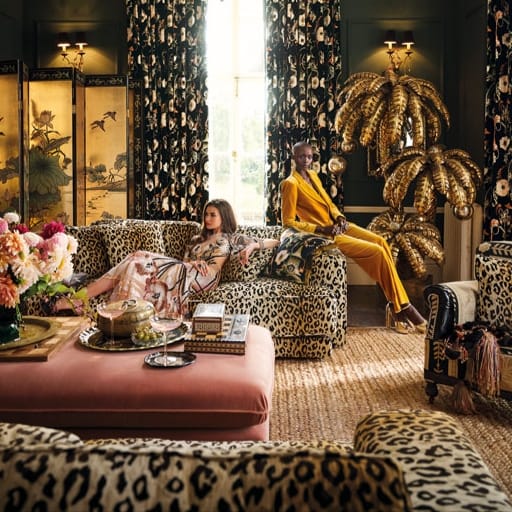
This resurgence draws its roots from the glamorous aesthetic of the 1970s and 1980s, an era when the interiors of Diane von Fürstenberg and Diana Vreeland celebrated decorative exuberance without restraint. Leopard, tiger, and panther prints are no longer relegated to kitsch accessories but establish themselves as aesthetic signatures in their own right.
The great textile publishing houses – Osborne & Little, Nobilis, Romo, Colefax & Fowler, Élitis – have perfectly understood this transformation and now offer collections where feline patterns express themselves with unprecedented sophistication, both in fabrics and wallpapers.

Leopard fabrics: the art of the feline touch
Leopard velvet embodies the excellence of feline upholstery fabric. Its tactile and chromatic depth naturally enhances the pattern, evoking animal fur with striking realism. This luxurious texture immediately elevates the pattern and avoids any garish or kitsch effect.
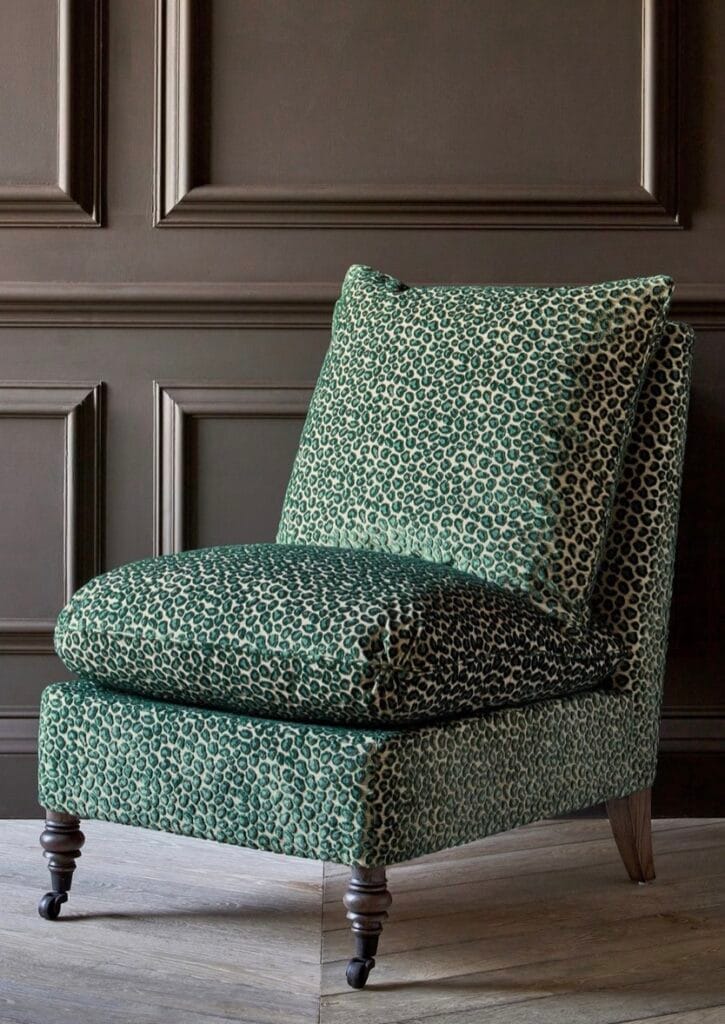
The integration of leopard fabric into an interior follows a subtle gradation between suggestion and statement. A Voltaire armchair or a Louis XV bergère upholstered in leopard velvet instantly becomes the centerpiece of a living room, commanding attention and structuring the decorative composition. This approach particularly suits assertive personalities who wish to create a true statement in their decoration.
For a more discreet introduction of the pattern, a few judiciously placed cushions on a natural linen or solid velvet sofa are enough to energize the ensemble without overwhelming the space. This strategy allows for gradually embracing the animal print and is perfectly suited to modestly sized interiors.
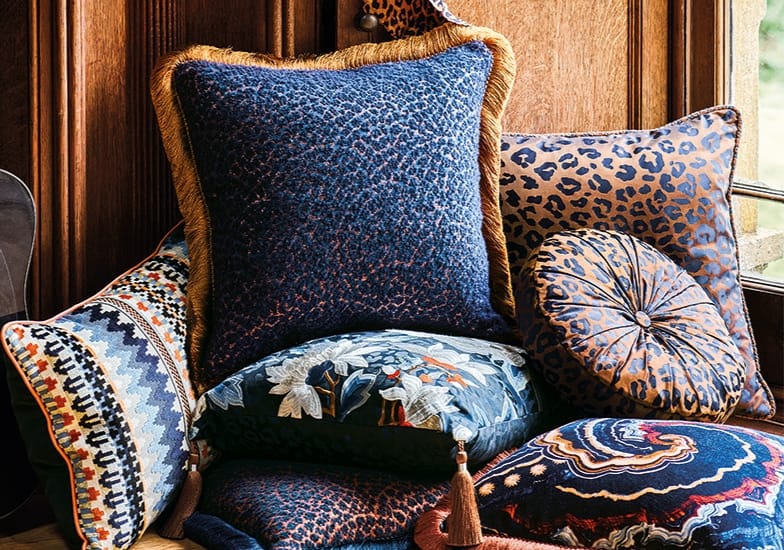
Leopard fabric curtains offer a particularly elegant middle ground. Their presence asserts itself while remaining fluid, animating the space through their natural drape while filtering light with sophistication. Contemporary upholstery fabrics designed for curtains come in linen-viscose or cotton compositions that provide that fluid fall so sought after.
Leopard pattern rugs: anchoring boldness on the floor
While fabrics and wallpapers dress the space vertically, leopard rugs offer an equally spectacular horizontal approach. As a quintessential structuring element, the feline-patterned rug visually anchors the decorative composition while bringing warmth and comfort.
The leopard rug possesses this remarkable ability to unify a space while creating distinct zones. In a large living room, it naturally delineates the conversation area. In a bedroom, positioned at the foot of the bed, it becomes that comforting first morning contact, a gentle transition between rest and activity.
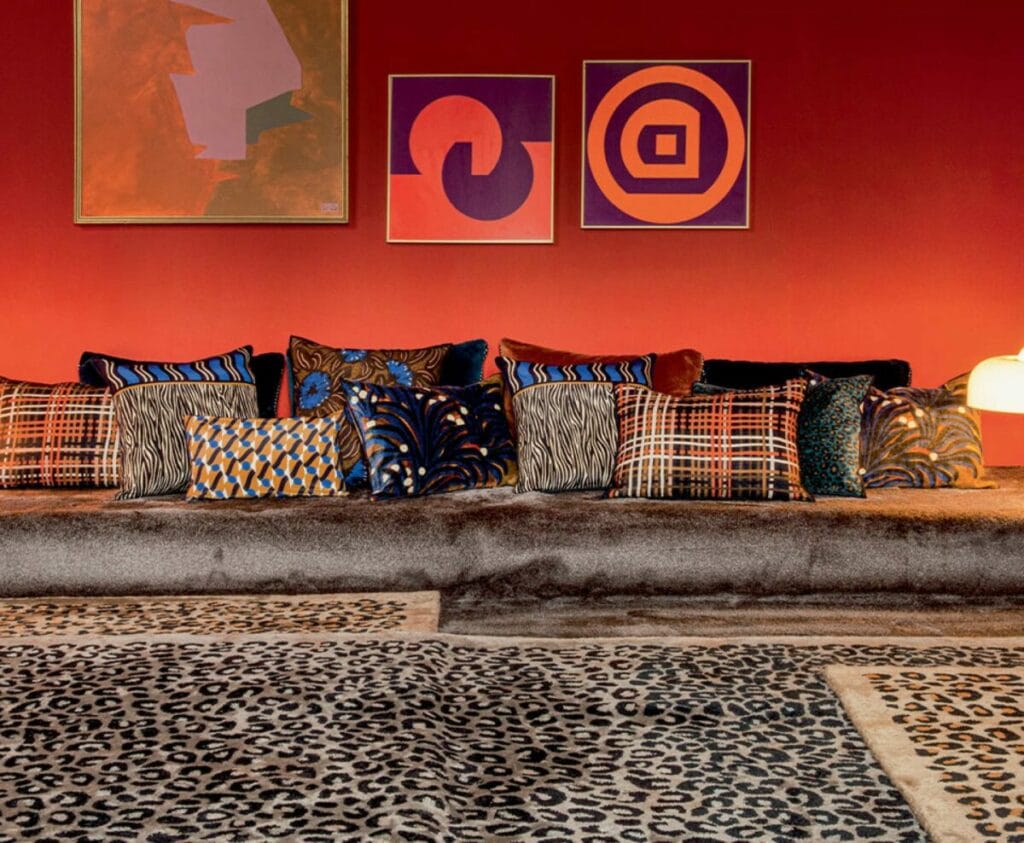
The rug’s dimensions considerably influence decorative balance. A large rug powerfully structures the space and establishes the pattern as a dominant element – a bold approach reserved for generous volumes and assertive personalities. A more modest format allows for measured integration, creating a focal point without saturating the space.
Combining a leopard rug with other feline textile elements requires discernment. It’s better to let the rug reign alone and accompany it with solid fabrics, neutral textures, or sober geometric patterns. This restraint guarantees a sophisticated rather than overloaded result.
Leopard pattern furniture from major publishers
The leopard pattern has conquered the most prestigious contemporary furniture houses, which now offer spectacular pieces integrating this iconic print. This high-end democratization allows enthusiasts to acquire already-upholstered creations signed by publishers recognized for their excellence. The Italians seem to have particular expertise in leopard prints, as evidenced by the number of collections among major design brands.
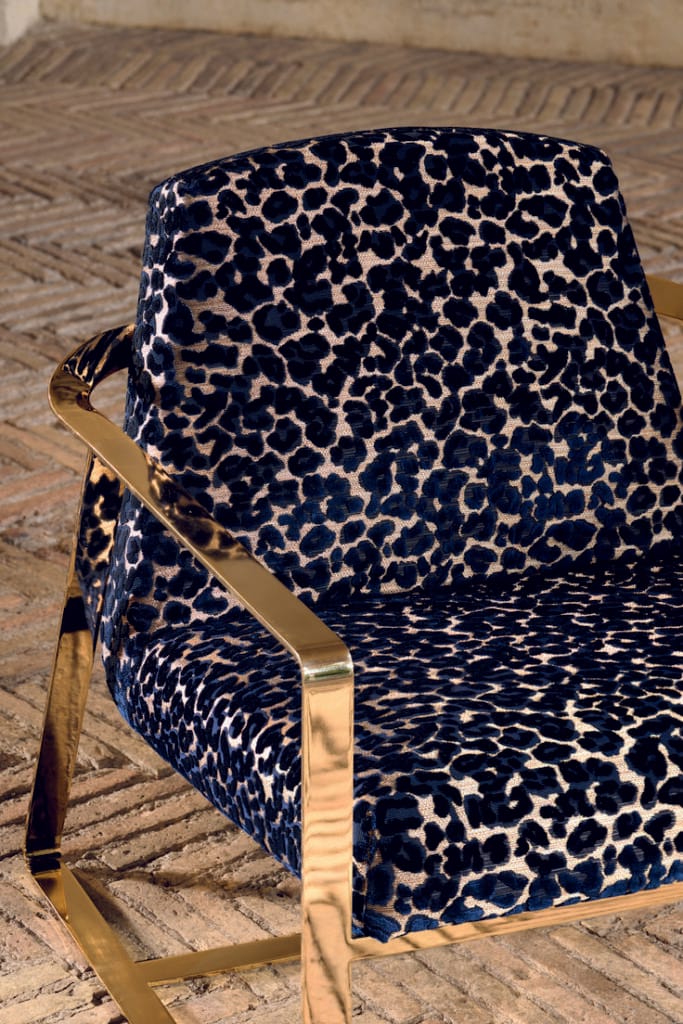
Roberto Cavalli Home Interiors transposes the flamboyant aesthetic of the Florentine fashion house into furniture collections where leopard reigns supreme. Sofas and armchairs are adorned with velvets in bold colors, blending animal prints and golden finishes in a resolutely baroque and sensual spirit.
Versace Home cultivates a similar approach, celebrating Mediterranean opulence through creations where leopard dialogues with the brand’s emblematic codes: golden medusas, Greek friezes, precious marbles. The armchairs and chaise longues from the collection display an assumed theatricality that transforms each piece into a stylistic statement.
Fendi Casa adopts a more refined vision of Italian luxury. The leopard pattern expresses itself with contemporary sophistication, often declined in gray or beige tones that integrate harmoniously with the architectural lines of the furniture. This refined approach appeals to a clientele seeking boldness without ostentation.
Dolce & Gabbana Casa completes this panorama with creations celebrating Sicilian exuberance. Leopard combines with colorful majolica, lemons, and generous roses in a decorative profusion that rehabilitates maximalism with humor and sophistication.
Among more classic publishers, Ralph Lauren Home offers safari chic interpretations where leopard evokes a revisited colonial spirit. Club armchairs in aged leather paired with leopard cushions create a masculine and timeless atmosphere, perfect for libraries and offices.
Leopard wallpapers: decorative immersion
While fabrics allow for introducing the feline pattern in subtle or assertive touches, wallpapers offer a different dimension: that of total immersion. Covering walls with leopard print belongs to a bold decorative approach, inherited from curiosity cabinets and Victorian smoking rooms.

Flocked relief wallpaper represents the pinnacle of excellence in this category. This ancient technique creates a true tactile experience: the flocked areas, velvety to the touch like fabric, contrast with the paper’s background, usually satin or matte. This alternation of textures produces a changing play of light depending on the time of day.
The Pardus wallpaper by Osborne & Little perfectly illustrates this excellence. Its flocked leopard pattern possesses a sculptural quality that literally transforms the space. The velvety texture gives the wall a warm, almost sensual presence, while maintaining the sophistication expected from a high-end wall covering.
These flocked wallpapers excel in confined spaces where their immersive effect can fully express itself: luxurious dressing rooms, intimate libraries, private offices, boudoirs. In these reduced volumes, the pattern envelops the occupant and creates a theatrical and muffled atmosphere, transforming these rooms into true personal sanctuaries.
For those seeking a less spectacular approach, traditional printed wallpapers offer an elegant alternative. Their smooth surface and often softer colors allow for a more discreet integration of the pattern, particularly suited to bedrooms or main living spaces.

Stylistic dialogues: from classic to contemporary
The extraordinary versatility of the leopard pattern lies in its ability to adapt to different aesthetic currents shaping contemporary interiors.
In the contemporary universe, leopard velvet applied to a chair with clean lines injects a dose of visual energy while preserving formal rigor. The contrast between the pure geometry of the furniture and the organic nature of the pattern creates a particularly stimulating aesthetic tension.
The Art Deco spirit finds a natural ally in feline prints, as it is historical. This period, which celebrated exoticism and ostentatious luxury, already associated animal patterns with brass, black marble, shiny lacquers, and saturated colors like malachite green or midnight blue. Reinterpreting this vocabulary today captures the essence of the Jazz Age while inscribing it in contemporaneity.

The urban jungle trend harmoniously combines leopard printed fabrics, generous indoor plants, and tinted rattan furniture. This aesthetic, popularized by decorators like Madeleine Castaing and later revisited by current creators such as India Mahdavi, celebrates domesticated nature with a touch of humor and much refinement.
In classic interiors, introducing leopard fabric on a Louis XV bergère or as curtains framing 18th-century paneling creates a fascinating temporal dialogue. This juxtaposition of eras, far from being discordant, reveals the permanence of certain luxury codes across centuries.
How to adopt the leopard trend with accuracy
Integrating leopard pattern into one’s interior requires a thoughtful approach to avoid kitsch or overloaded effects. Several strategies allow for adopting this trend with elegance.
The focal point rule remains essential: it’s better to concentrate the pattern on a strong element – a statement armchair, a wall section in wallpaper, generous curtains – rather than dispersing it timidly. This concentration creates an assertive visual impact while preserving the ensemble’s balance.
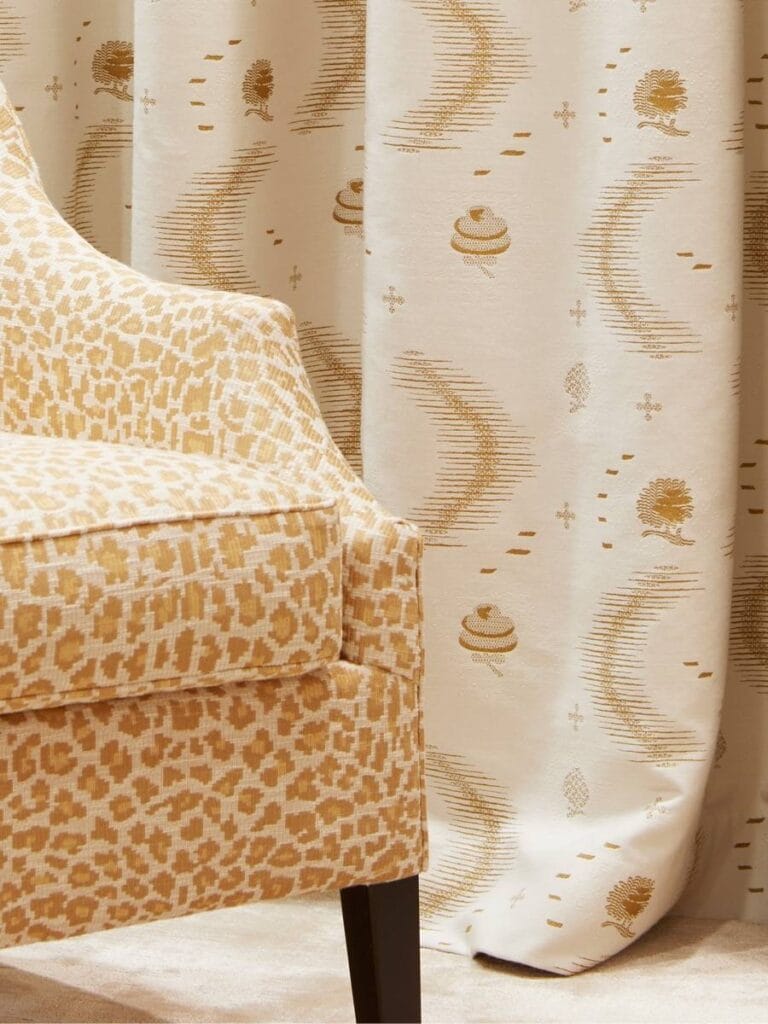
Association with noble materials reinforces the pattern’s legitimacy. Leopard velvet dialogues magnificently with brushed brass, veined marble, patinated precious wood, or aged leather. These luxurious materials elevate the animal print and inscribe it in a sophisticated rather than merely decorative register.
The surrounding chromatic palette also plays a crucial role. The natural tones of leopard – golden brown, black, beige, ochre – harmonize naturally with earthy colors or neutral tones. For more boldness, one can create unexpected chromatic agreements: classic leopard with touches of emerald green, peacock blue, or deep burgundy.
Lighting constitutes an often neglected but determining element. Leopard velvet reveals all its richness under directed light that accentuates its texture and makes its nuances vibrate. Flocked wallpaper plays with cast shadows and requires indirect lighting to reveal its sculptural dimension.

A personal passion for leopard print
Wearing leopard in one’s interior is to summon a rich imaginary that crosses cultures and eras: from royal African robes to Viennese psychoanalysts’ divans, from Parisian opera boxes to Hollywood boudoirs. This pattern simultaneously embodies wild nature and the domestication of luxury, instinct and sophistication.
The current multiplication of workshop requests testifies to a profound evolution in decorative mentalities. Contemporary interiors now assume an assertive personality, moving away from standardized codes to claim a singular identity. Leopard fabric and wallpaper thus become powerful decorative narrative tools.
This trend is not a passing fad. It belongs to a broader movement of reclaiming decor as personal expression, as an affirmation of an assumed aesthetic vision. Whether it’s a discreet cushion or an entirely wallpapered wall, a reupholstered vintage armchair or a piece signed by a major publisher, the leopard pattern allows everyone to measure their decorative boldness according to their own sensibility.
Personally, leopard print exerts a constant fascination. It represents that perfect alchemy between timeless elegance and contemporary boldness, between refinement and character.
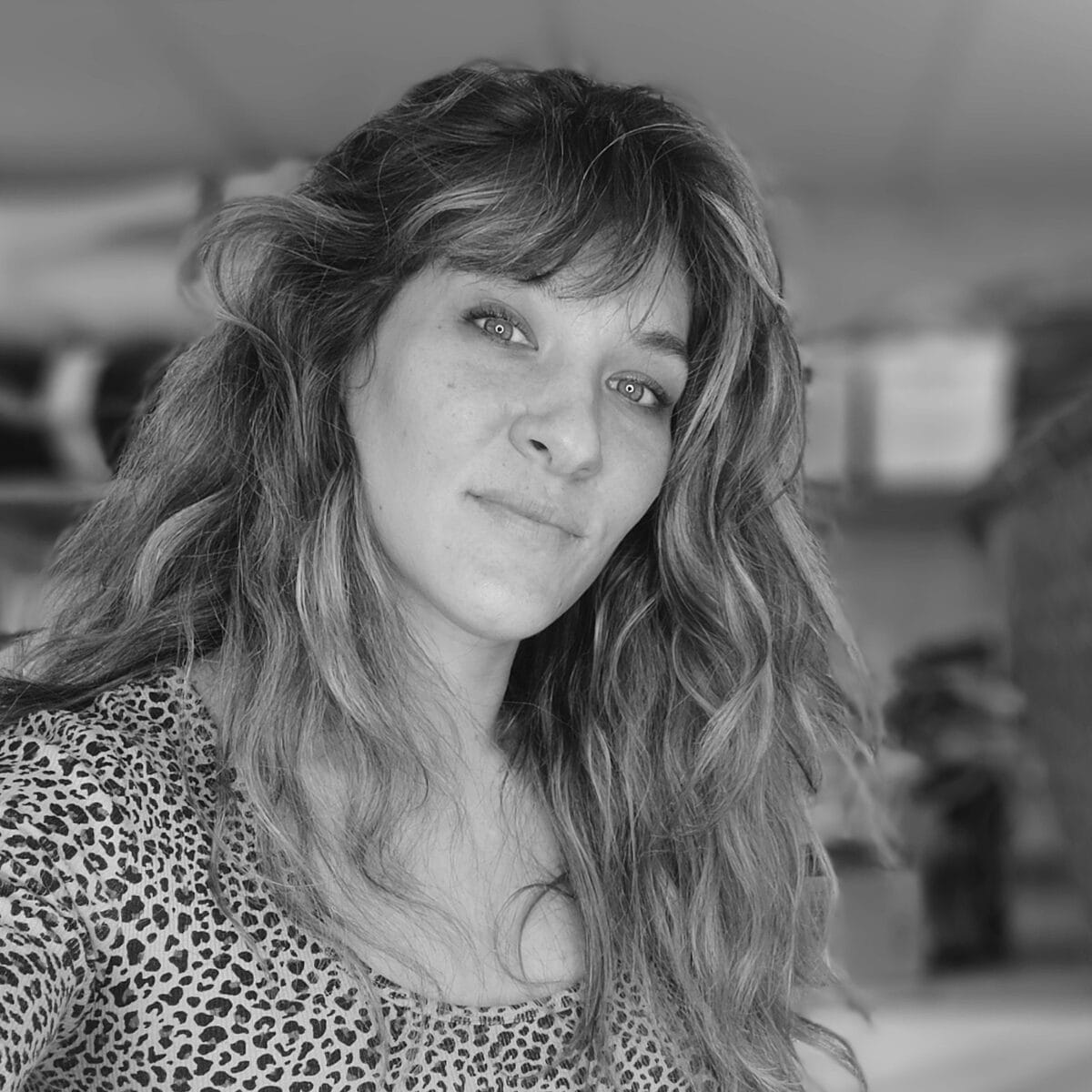
Digital entrepreneur and craft artisan, I use my unconventional background to share my vision of luxury design and interior decoration — one enriched by craftsmanship, history, and contemporary creation. Since 2012, I have been working daily in my workshop on the shores of Lake Annecy, creating bespoke interiors for discerning decorators and private clients.
